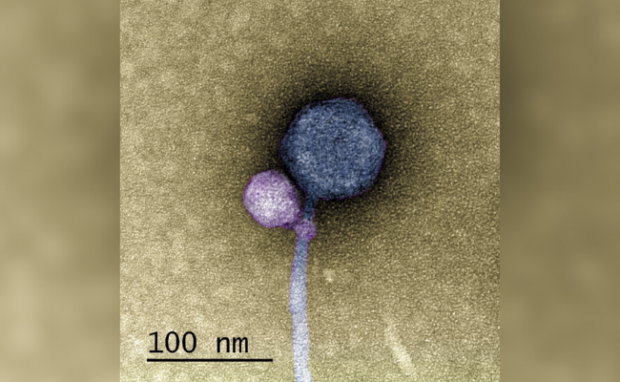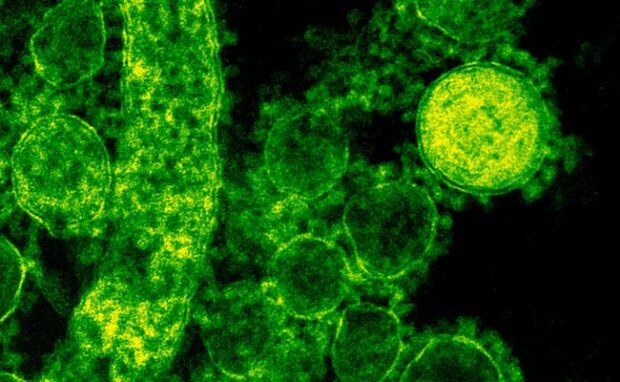Scientists found a virus attached to another
Scientists discovered a virus attached to another for the first time in history. Tagide deCarvalho, the study’s lead author, discovered it while looking at a bacteriophage sample. He and his team thought other microorganisms were merely close to the virus. However, they confirmed they have the first instance of a satellite virus attached to a helper virus.
The COVID pandemic demonstrated to everyone worldwide the devastating effects of a viral outbreak. That disaster is over, but scientists still work tirelessly to protect us from another one. Discovering unique viruses could help us spot dangerous ones so that we could prepare for their potential impact.
This article will explain how scientists discovered a virus attached to another. Moreover, I will elaborate on this unusual behavior among these microscopic organisms and cover other recent virus discoveries.
How did scientists discover linked viruses?

Tagide deCarvalho, an assistant director at the University of Maryland, and his team were looking at environmental samples of bacteriophage satellites that infect Streptomyces bacteria. Bacteriophages are viruses that infect bacteria.
However, one of the samples seemed to have a contamination. The samples contained large DNA sequences, so the scientists thought other phages and smaller DNA bits muddled them.
Yet, closer inspection revealed helper and satellite bacteriophages. Roughly 80% of the helper virus had a satellite bound to their neck. Moreover, some of the helpers had “bite marks.”
Live Science said they are the “aftermath of an interaction,” remnant tendrils from a satellite. Later, the experts analyzed the genomes of the helper and satellite viruses.
Look above, and you’ll see a large blue virus with a smaller purple one attached to it. The former is the helper virus, and the latter is a satellite virus.
They discovered the satellites had genes that coded for their outer protein shell but not the essential ones needed to replicate within bacterial cells. Consequently, the scientists had further proof they were interacting with each other.
You may also like: How to add an email signature in Outlook
They learned some satellite viruses do not have the gene that will let them integrate into a host’s genome after entering it. In response, these smaller viruses adapted to latch onto a larger helper with its tail.
The researchers wrote in their paper, “These findings demonstrate an ever-increasing array of satellite strategies for genetic dependence on their helpers in the evolutionary arms race between satellite and helper phages.”
Assistant Director deCarvalho said his team’s discovery could shed light on this unique adaptive behavior. “It’s possible that a lot of the bacteriophages that people thought were contaminated were actually these satellite-helper systems,” deCarvalho said. “So now, with this paper, people might be able to recognize more of these systems.”
What are the other recent virus discoveries?

Virologist Jean-Michel Claverie had a chilling discovery underneath Russia’s Kolyma River. He and his team found ancient pathogens in the Siberian permafrost, and they remain infectious.
Many expect viruses to come from tropical regions, referred to as the “south.” Now, he said, “We realize there might be some danger coming from the north as the permafrost thaws and frees microbes, bacteria, and viruses.”
According to Australia’s 9 News report, “We view these amoeba-infecting viruses as surrogates for all other possible viruses that might be in the permafrost.”
“If the amoeba viruses are still alive, there is no reason why the other viruses will not be still alive and capable of infecting their own hosts,” he added.
Fortunately, new discoveries enable scientists to create technologies combatting these pathogens. Computational biologist Debora Marks used the COVID pandemic as an inspiration to improve EVE.
It is an acronym for “evolutionary model of variant effect,” and it is a generative model that learns to predict how proteins work based on large-scale evolutionary data across species.
You may also like: How to check for phone viruses
However, COVID-19 swept throughout the world as an unpleasant surprise for researchers. It kept changing its structure, so therapies and vaccines struggled to beat it.
“We underestimated the ability of things to mutate when they’re under pressure and have a large population in which to do so,” Marks said. However, Marks and her team saw the pandemic as an opportunity to improve EVE.
They rebuilt it into an AI virus tool called EVEscape that predicts viral variants. The experts tried it on COVID-19, and it processed thousands of new SARS-CoV-2 variants produced weekly and identified the most problematic ones. “By rapidly determining the threat level of new variants, we can help inform earlier public health decisions,” said co-lead author Sarah Gurev.
Conclusion
Scientists discovered a satellite virus attached to a helper virus for the first time in history. They learned the former relies on the latter to infect a host and replicate.
It may seem bleak to see scientists discovering unique pathogens. Fortunately, they use their discoveries to create new technologies and prepare for these infectious microorganisms.
Learn more about this study about helper and satellite viruses by reading Tagide deCarvalho and his team’s ISME Journal entry. Check out more digital tips and trends at Inquirer Tech.